Introduction:
Diabetes, also referred to as diabetes mellitus, is a long-term medical condition marked by high blood glucose (sugar) levels. The body’s incapacity to either make enough insulin or use it efficiently when it does is what causes this disorder. The hormone insulin is necessary to control blood sugar levels and to make it easier for cells to absorb glucose and use it as fuel.
Types OF Diabetes:
Diabetes comes in various forms, the most prevalent being Type 1 and Type 2.
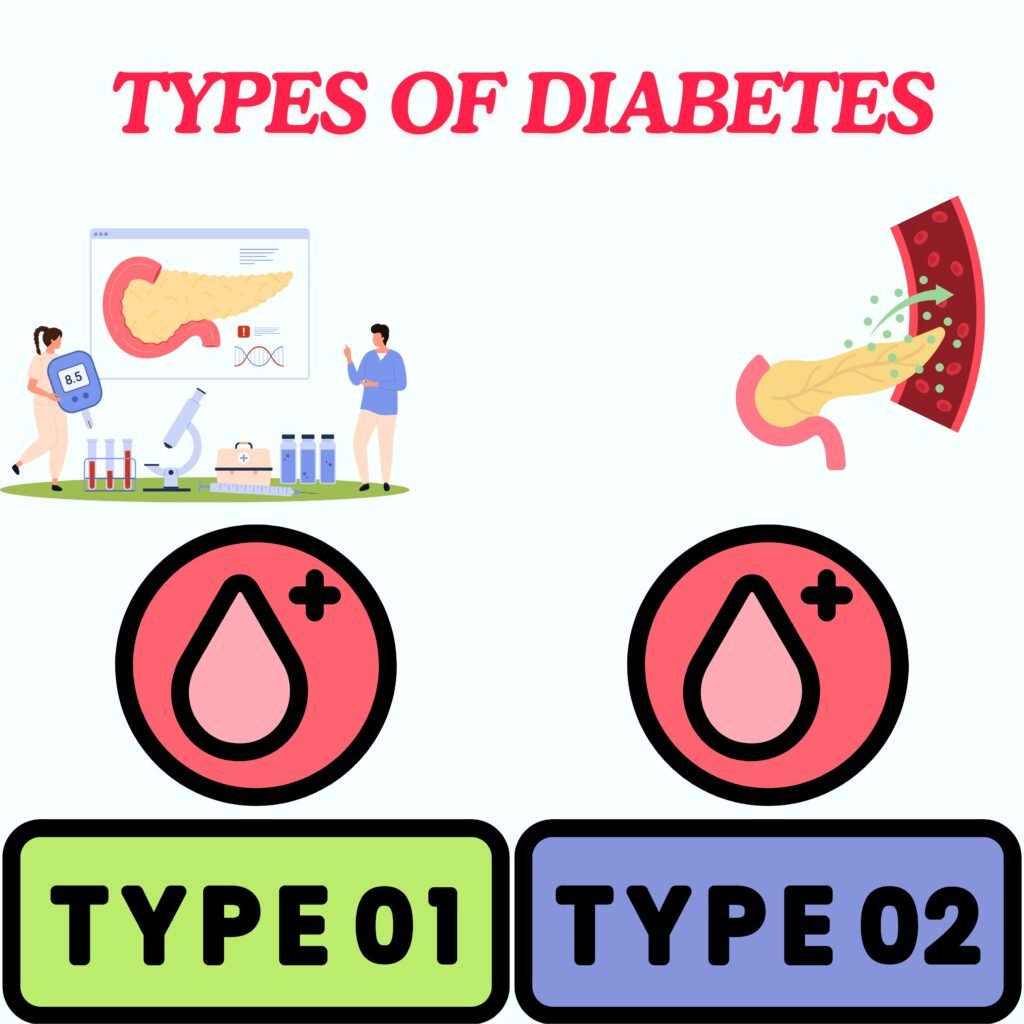
1) Diabetes Type 1:
- Insulin-producing beta cells in the pancreas are accidentally attacked and destroyed by the immune system in people with Type 1 diabetes.
- This kind typically appears in early childhood or adolescence.
- Insulin therapy is necessary for lifelong treatment of Type 1 diabetes.
2) Diabetes Type 2:
- Diabetes type 2 is more common and typically manifests in adulthood.
- It happens when the body either stops producing enough insulin or becomes resistant to it.
- Type 2 diabetes is a result of lifestyle factors that include obesity, poor diet, and insufficient physical activity.
3) Gestational Diabetes:
Diabetes that develops during pregnancy and typically goes away after childbirth is known as gestational diabetes. On the other hand, type 2 diabetes is more likely to strike women who have gestational diabetes in the future.
4) Prediabetes:
Blood sugar levels that are above normal but not high enough to be classified as diabetes are known as prediabetes. On the other hand, the chance of becoming type 2 diabetes is greatly increased by prediabetes.
Reasons and Danger Factors:
- Genetics: A family’s history may make diabetes more likely.
- Obesity: Carrying too much weight around increases the risk of Type 2 diabetes.
- Sedentary Lifestyle: Insulin resistance may be exacerbated by inactivity.
- Age: As people age, their risk of diabetes rises.
- Ethnicity: Diabetes is more common in some ethnic groups than others.
Symtoms:
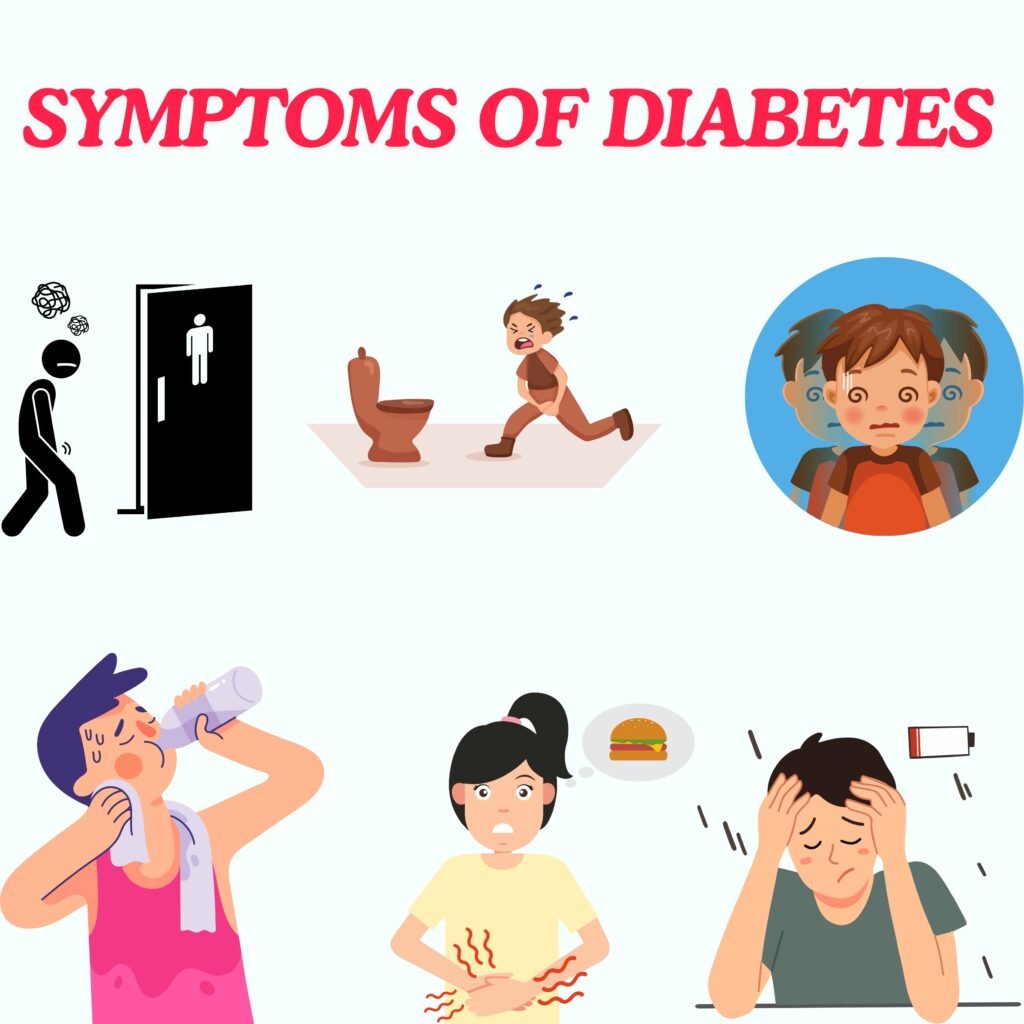
- Polyuria (Frequent Urination): Increased urine production is a result of elevated blood glucose levels.
- Polydipsia, or excessive thirst, is brought on by dehydration from frequent urination.
- Polyphagia (Excessive Hunger): Hunger is caused by insufficient insulin, which inhibits the absorption of glucose.
- Unexplained Weight Loss: The body may experience weight loss despite an increase in appetite.
- Fatigue: Insulin inefficiency prevents cells from getting enough energy.
- Vision blurring: Elevated blood sugar levels can have an impact on the eye’s lens.
- Slow Wound Healing: The healing process is hampered by poor blood circulation.
Complications:
Diabetes raises the risk of heart disease and stroke, which is known as cardiovascular disease.
Diabetic kidney damage can result in kidney failure.
- Eye Issues: Retinopathy can result in blindness or visual impairment.
- Neuropathy: Pain, tingling, or numbness may be the result of damage to the nerves.
- Foot Complications: Infections and ulcers are more likely to occur in feet with poor blood circulation and nerve damage.
Diagnosis Of Diabetes:
- Blood sugar levels are measured to diagnose diabetes. Numerous tests are available.
- Blood sugar levels are measured via a fasting blood test, which requires eight hours without food or liquids.
- HbA1c test: This test calculates the blood sugar average for the previous two to three months.
- Oral glucose tolerance test: After consuming a sugary solution, blood sugar levels are measured.
Management And Treatment:
- Lifestyle Adjustments: Moderate consumption of carbohydrates and a nutritious diet.
- Frequent exercise.
- control of weight.
- Insulin treatment for Type 1 diabetes is the medication.
- insulin injections or oral medicines for Type 2 diabetes.
- Support and Education: Patients and their families can receive diabetes education.
- Support groups providing both practical and emotional help.
Having diabetes:
A comprehensive strategy is needed to manage blood sugar levels, embrace a healthy lifestyle, and take care of one’s emotional wellbeing when one has diabetes. The following are some essential tactics for successfully treating diabetes:
1) Education and Understanding:
- Find more about the causes, signs, and complications of diabetes.
- Recognize the effects that various foods and activities have on blood sugar levels.
- Keep up with the latest advancements in the treatment of diabetes.
2) Health Care:
- See medical specialists on a regular basis, such as dietitians, endocrinologists, and diabetes educators.
- As instructed by your physician, take the insulin and medicine as recommended.
- Regularly check blood sugar levels and document the results.
3) Regular Physical Activity:
- Frequent Physical Activity: Exercise on a regular basis to help manage blood sugar levels and enhance insulin sensitivity.
- Select enjoyable hobbies for yourself, including dancing, walking, cycling, or swimming.
- Try to get in at least 150 minutes a week of moderate-to-intense activity.
4) Controlling Weight:
- Keep your weight in check by combining food and exercise.
- Reducing body fat can enhance insulin sensitivity and the management of diabetes in general.
5) Observation and Self-Treatment:
- Use a glucose metre to measure blood sugar levels on a regular basis.
- Observe any symptoms of elevated or lowered blood sugar and respond accordingly.
- Keep an eye on your cholesterol and blood pressure because diabetes raises your risk of cardiovascular problems.
Conclusion:
Remember, managing diabetes is a lifelong journey, and it’s essential to work closely with healthcare professionals to tailor a plan that suits your individual needs. Regular communication with your healthcare team, a commitment to a healthy lifestyle, and ongoing self-monitoring are key components of successful diabetes management.
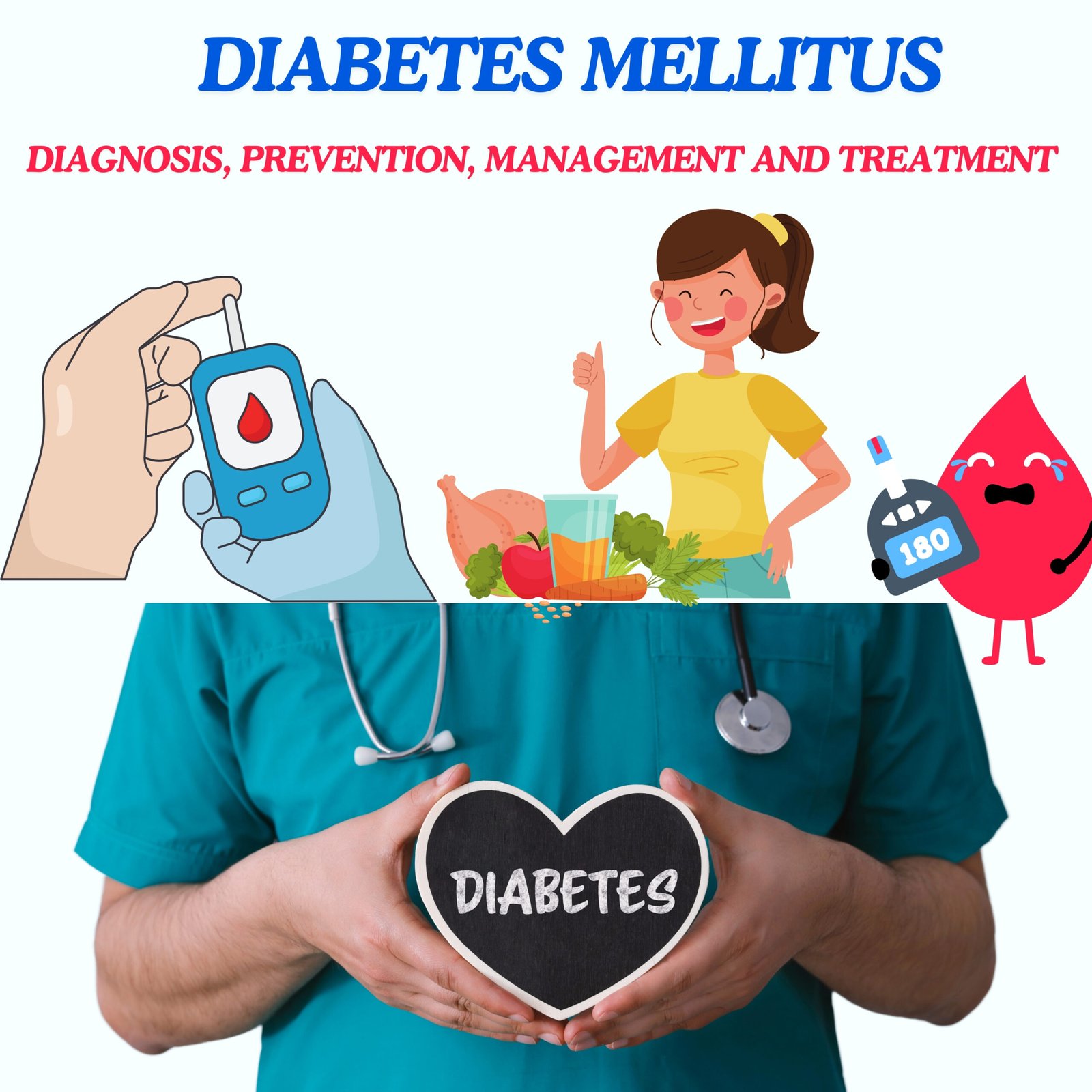




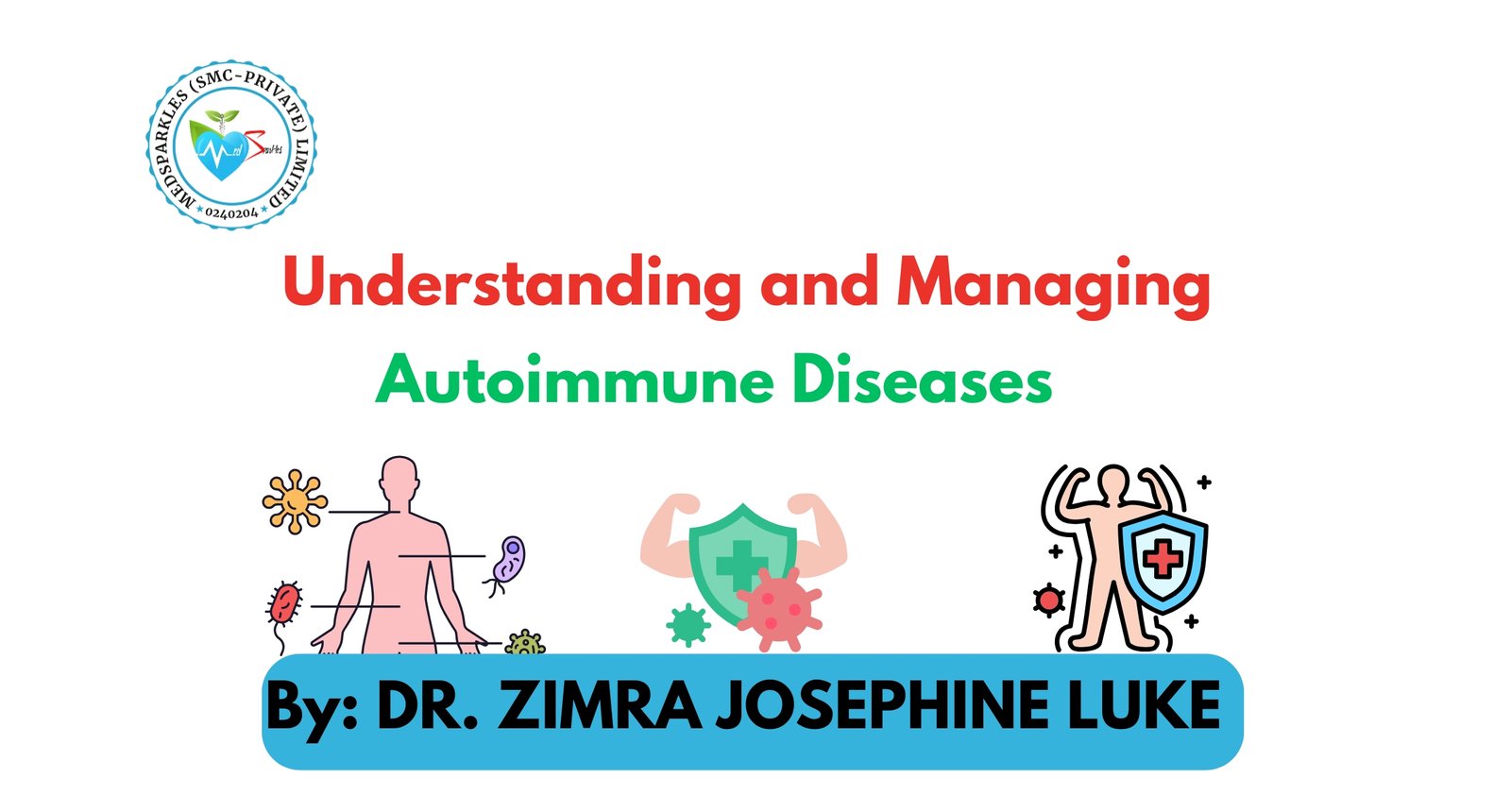
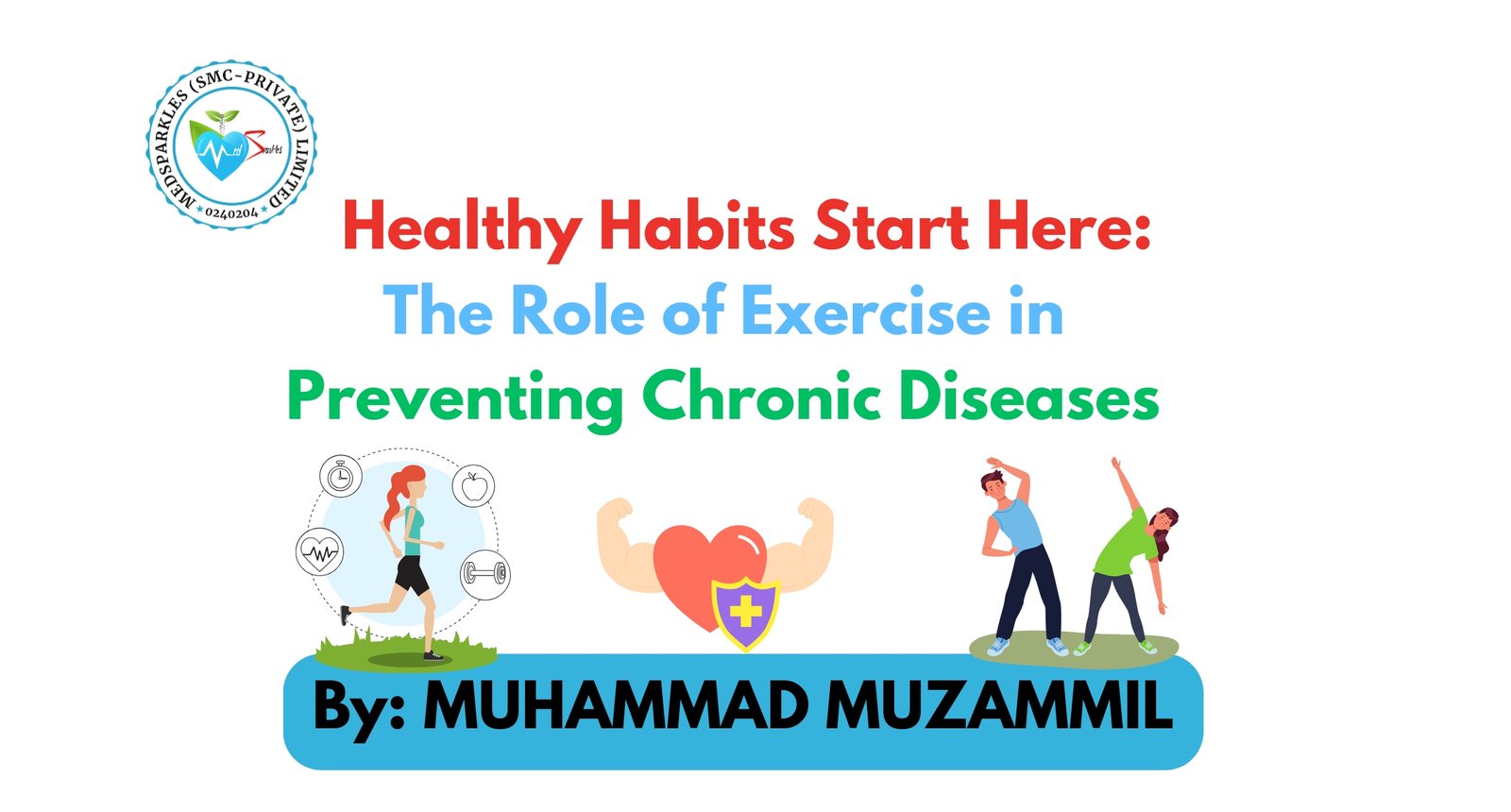
1 Comment.
Informative .